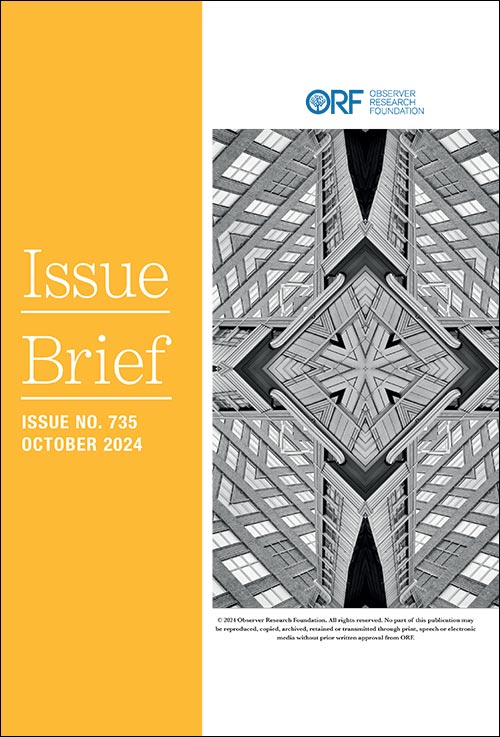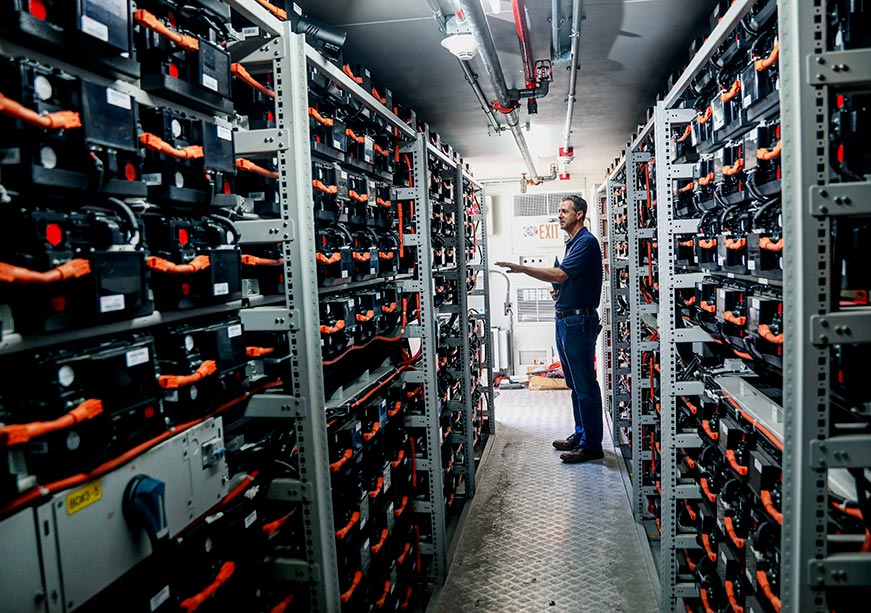Introduction
The trade war between the US and China, initiated during the Trump administration, reshaped global trade dynamics. As a result, imports from China were offset by increased imports from other countries. Additionally, the tariffs imposed by the US incentivised firms operating manufacturing units to relocate back to the US or to other geographies with more favourable trade conditions.[1]
This shift was dramatically accelerated by the COVID-19 pandemic, which exposed and intensified vulnerabilities within these concentrated supply chains. The pandemic’s disruption, marked by severe lockdowns and restrictions in China due to the zero-COVID policy, further highlighted the risks posed by an overreliance on a single geographical area for manufacturing.
Another factor that has led to the ‘friendshoring’ of business operations is the geopolitical tensions between China and a number of countries, particularly those in the West. National security concerns have been a primary driver of the decoupling from China. The US, for example, has emphasised limiting China’s access to advanced technologies that could be used to enhance its military capabilities or commit security breaches. This has led to heightened restrictions on technology transfers and investments. For instance, the US Bureau of Industries has restricted China’s access to advanced artificial intelligence chips that US-based firms have designed.[2]
India and Vietnam have reaped benefits from the ‘China+1’ strategy. Both countries have seen growth in sectors such as computers and electronics, whose exports to the US have surged.
At the same time, India is also reducing its dependence on Chinese imports. In the last four years, there has been a sea-change in the products that are imported from China. The decoupling exercise is not just confined to goods but also to investments. The government amended India’s foreign direct investment (FDI) policy in April 2020 to prevent opportunistic takeovers of Indian companies during the COVID-19 pandemic by entities from countries sharing a land border with India, which include China. As a result, any investment from these countries now requires approval under the government route.
Thus, India’s economic realignment away from China is based on three pillars. The first pillar aims to reduce dependency on a single foreign supplier, particularly during crises and supply disruptions. The Atmanirbhar Bharat (self-reliant India) mission plays a crucial role in reducing this dependence. The second pillar focuses on transforming India into an appealing hub for global value chains. This has been done through the tweaking of India’s industrial policy by introducing measures such as the production-linked incentive (PLI) scheme and improving the ease of doing business in the country. This approach not only boosts Indian exports and addresses trade imbalances but also fosters job creation domestically. The third pillar deals with India’s renewed focus on regional trade agreements (RTAs) with developed countries, which has led to trade creation by eliminating tariffs and other trade barriers. Thus, it has enhanced market access for Indian goods and provided foreign companies with easier entry and operational conditions in the Indian market. Enhanced regulatory harmonisation and investor protections under these RTAs further incentivise multinational entities to establish or expand their manufacturing and service bases in India, thereby giving an impetus to trade and investment flows.
Atmanirbhar Bharat
Critics often view Atmanirbhar Bharat as being in opposition to free trade and as a step towards autarky. Scholar Eric Helliner has identified three critical characteristics of an autarky: “(1) insulation from foreign economic influence; (2) insulation from foreign political and/or cultural influence; and (3) the promotion of international peace”.[3] India, however, is not aiming to achieve any of these objectives through the Atmanirbhar Bharat initiative; its policy should instead be seen through the lens of pragmatism and reciprocity. Atmanirbhar Bharat is a pragmatic policy that emphasises enhancing India’s competitiveness by improving infrastructure, supporting small and medium enterprises, and encouraging technological advancements.
The COVID-19 pandemic has catalysed a worldwide trend of countries prioritising domestic industries. Nevertheless, Atmanirbhar Bharat transcends merely shielding local industries from international competition, which could potentially stifle their growth. Instead, the initiative strategically encourages foreign firms to manufacture in India. This approach nurtures a competitive market environment within the country and compels Indian companies to enhance their efficiency and productivity.
Any kind of protectionism is seen as being at loggerheads with free trade. Yet, free trade, despite its ideal of unimpeded economic exchange, can lead to vulnerabilities when strategic industries become too dependent on external sources. Adopting selective protectionist measures can safeguard a country’s national interests. It also ensures economic security in an unpredictable global landscape, demonstrating that prudent protectionism can be a necessary complement to free trade in maintaining a balanced and resilient economy.
Economist John Maynard Keynes, like many of his contemporaries, was a staunch supporter of free trade. He viewed it as an economic and moral doctrine beyond reproach, fundamental to England’s economic dominance. By the 1930s, however, Keynes began questioning the unmitigated benefits of free trade. In 1933, he wrote an essay on national self-sufficiency.[4] He published this work amid the Great Depression, whose consequences on economies globally included persistent high unemployment rates. During this period, the previously held belief that free trade invariably led to optimal employment and economic stability came to be challenged.
The sentiment expressed by Keynes in 1933 resonates strongly with current India-China relations, especially in the context of recent geopolitical and economic tensions. India’s situation during the COVID-19 pandemic, marked by an excessive reliance on China for essential goods, highlighted vulnerabilities in its supply chain. In February 2020, the then Union Minister of Chemicals and Fertilizers told the Parliament that India was importing two-thirds of its active pharmaceutical ingredients from China. The supply shock from China seriously hampered India’s ability to manufacture even basic antibiotics during the pandemic.
Further, the compounded issues of Chinese territorial incursions and repeated violations of security agreements[5] have made a case for India to reconsider its economic policies. This reevaluation recalls Keynes’s shift decades earlier, reflecting a similar move away from a pure laissez-faire approach towards adopting strategies that ensure economic security and sovereignty.
Production-Linked Incentive Schemes
To drive this self-reliance in essential goods, India has launched PLI schemes across 14 key sectors. These include pharmaceuticals, large-scale electronics, medical devices, electronic/technology products, telecommunications and networking products, food products, white goods (ACs and LEDs), high-efficiency solar PV modules, automobiles and auto components, advanced chemistry cell (ACC) batteries, textile products (MMF segment and technical textiles), specialty steel, and drones and drone components. The aim of the schemes is to create national manufacturing champions and attract global companies to manufacture in India.
PLI schemes have substantially revitalised manufacturing in India. Since their inception, over INR1 trillion in investments and INR8.6 trillion in production/ sales had been made by November 2023. These schemes have also been pivotal in generating employment for more than 6.78 lakh individuals and fostering exports exceeding INR3 trillion.
PLI in mobile phone manufacturing has been a great success. Further, due to PLI in the pharmaceutical sector, there has been a significant reduction in imports of raw materials. Unique intermediate materials and bulk drugs, including Penicillin-G, are now manufactured in India. Additionally, the production of 39 different medical devices is now underway, encompassing a variety of essential equipment such as CT-Scans, linear accelerators (LINAC), rotational cobalt machines, C-arms, MRIs, cath labs, ultrasonography machines, dialysis machines, heart valves, and stents.
PLI has also successfully transformed India’s export basket from primarily traditional commodities to a more diversified range featuring high-value-added products. This pivot has been particularly evident in sectors such as electronics, telecommunications, and processed food products.
Reviewing Existing RTAs and Forging New Ones
An internal analysis in 2020 by the Economic Advisory Council to the Prime Minister (EAC-PM) highlighted a significant pattern in the ‘China+1’ manufacturing strategy: industries aiming to diversify their manufacturing bases away from China were increasingly favouring Vietnam. This preference was largely attributed to RTAs with developed countries, which provide Vietnam with preferential market access. These RTAs positioned Vietnam as an appealing hub in the global supply chain, drawing companies eager to leverage these well-established trade connections.
Historically, India’s RTAs focused on strengthening ties with other emerging economies. This was driven by geopolitical considerations, the nature of Indian exports, and the regulatory environments of potential partners in developed countries. While these relationships enhanced regional cooperation and growth, they also resulted in India’s challenges in accessing well-established, developed markets.
From 2007 to 2011, India negotiated RTAs primarily with developing countries in Africa, South America, and Asia. These agreements often resulted in a trade imbalance, favouring India’s partners who benefited from the large Indian market, while Indian exports lagged behind.
Recognising these dynamics, the Indian government has pivoted its strategy post-2020, actively pursuing and signing RTAs and free trade agreements (FTAs) with developed economies. A landmark development was the India-Australia Economic Cooperation and Trade Agreement (ECTA), signed on 2 April 2022. This was India’s first trade agreement with a developed country in over a decade, designed to broaden economic and commercial cooperation across various sectors, including goods, services, and technical barriers to trade.
Moreover, India renewed its trade relationship with the UAE through the Comprehensive Economic Partnership Agreement (CEPA) on 18 February 2022. This pact aims to triple goods trade to US$100 billion within five years and potentially reach US$250 billion by 2030, promising substantial generation of employment across diverse sectors.
India is also advancing negotiations with the European Union, the UK, Israel, and the Gulf Cooperation Council countries. These efforts are part of a broader initiative to engage more fully with both developed and developing economies worldwide, seeking to secure significant economic and strategic advantages for India.
In summary, India’s economic shift away from China has significantly strengthened its manufacturing sector. The government has actively created a more favourable environment for foreign manufacturers to operate within the country. Nevertheless, while progress has been made, further reforms are essential at the state level to fully capitalise on these developments. This includes implementing recent labour reforms, making improvements in the land market, and enhancing skill development initiatives. These steps are crucial for ensuring that the new policies effectively support and sustain the growth and attractiveness of India’s manufacturing industry to global investors.
The first version of this brief appeared in the ORF-GP volume, Rising to the China Challenge: Sino-Indian Ties Under Modi, which can be accessed here:
Endnotes
[1] Eugenio Cerutti, Gita Gopinath, and Adil Mohommad, “The Impact of US-China Trade Tensions,” IMF Blogs, May 23, 2019.
[2] Bureau of Industry and Security, US Department of Commerce.
[3] Eric Helleiner, “The Return of National Self-Sufficiency? Excavating Autarkic Thought in a De-Globalizing Era,” International Studies Review 23, no. 3, September 2021: 933–957.
[4] John Maynard Keynes, “National Self-Sufficiency,” Studies: An Irish Quarterly Review 22, no. 86, June 1933: 177-193.
[5] “Jaishankar Doctrine’ and India’s ‘challenging’ relationship with China,” Economic Times, April 16, 2023.
The views expressed above belong to the author(s). ORF research and analyses now available on Telegram! Click here to access our curated content — blogs, longforms and interviews.

 PDF Download
PDF Download



 PREV
PREV



